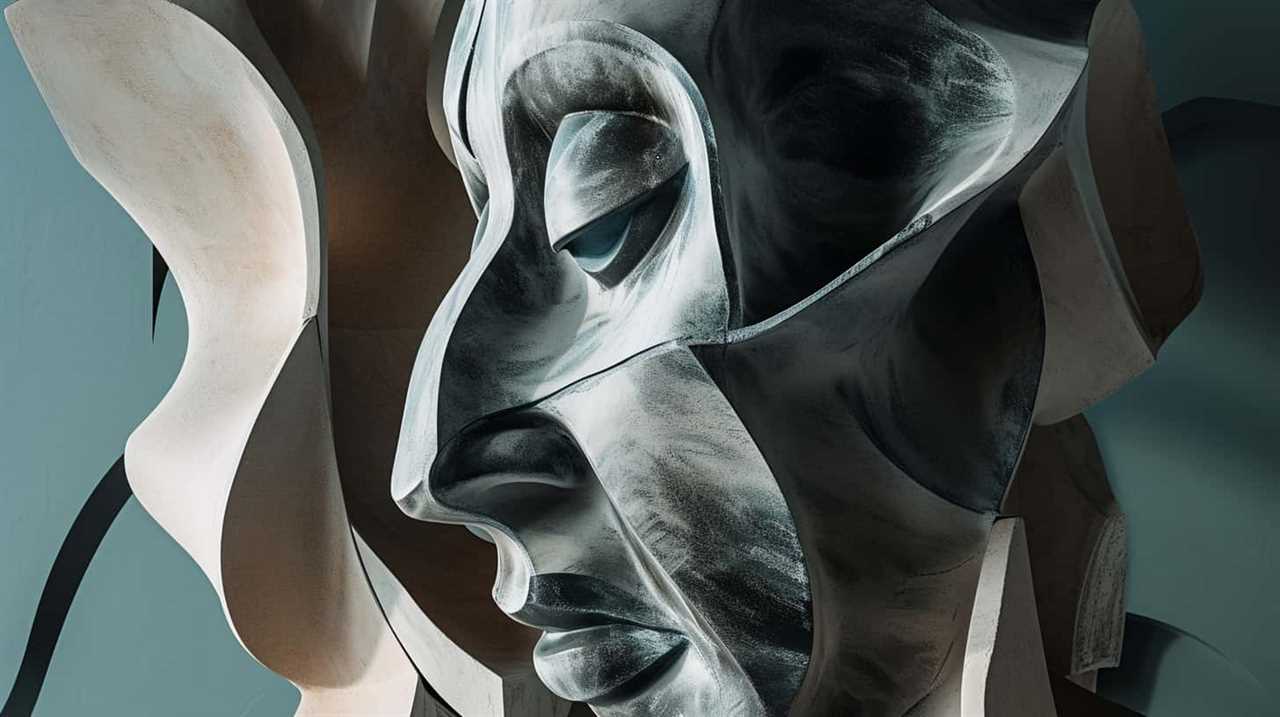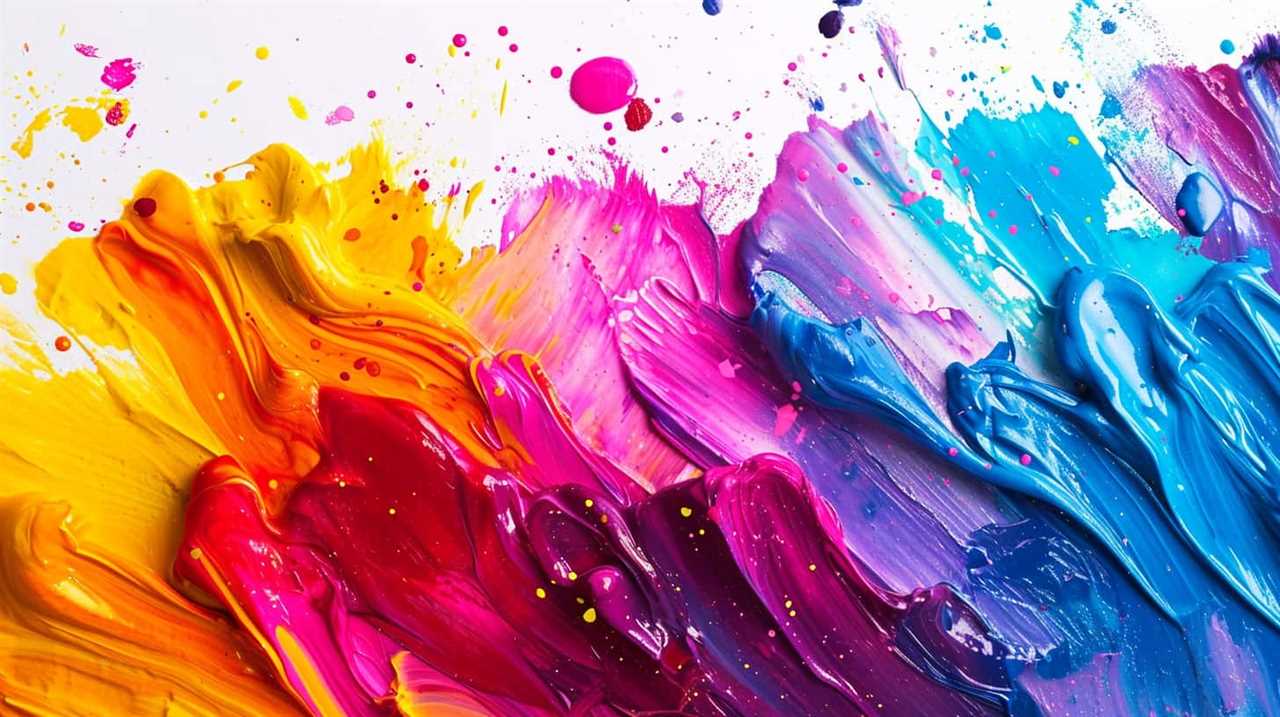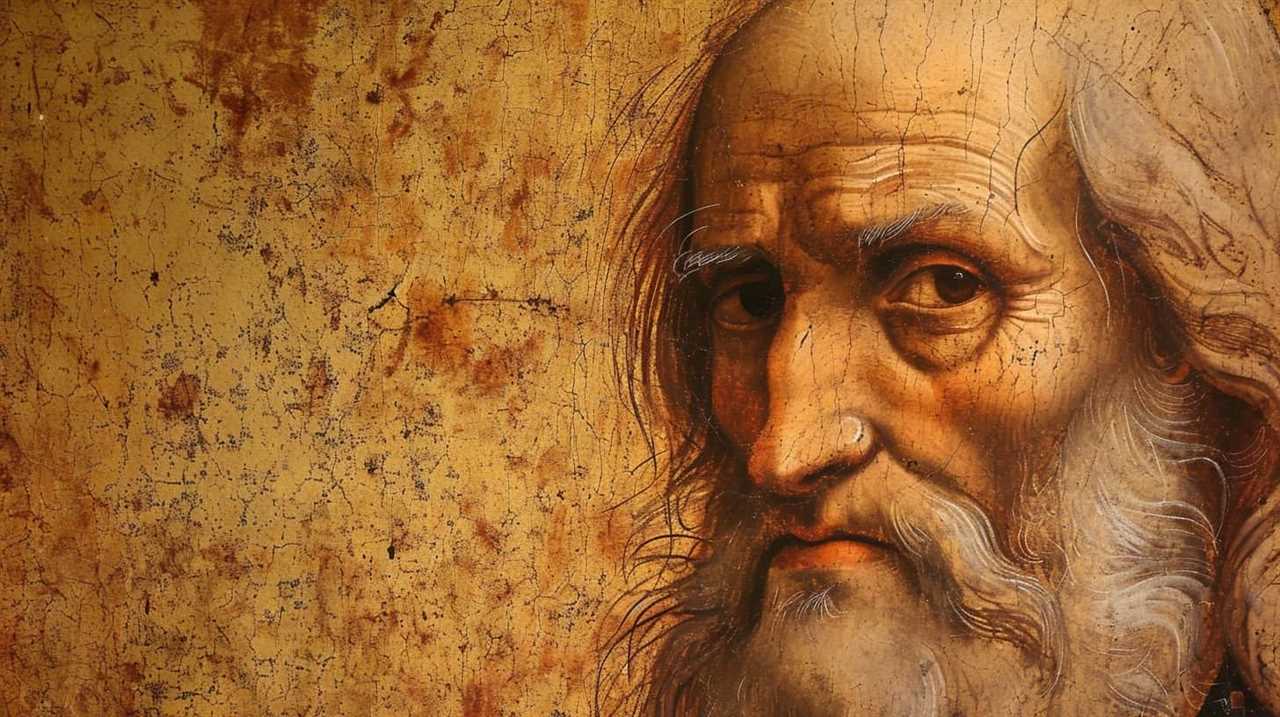In the art world, we are always seeking inspiration and guidance from those who have succeeded in their field. Today, we embark on a journey of learning and exploration, delving into the profound wisdom of three iconic creators.
Picasso, the symbol of artistic revolution, offers us his invaluable perspective on the creative process.
Frida Kahlo, a beacon of individuality and self-expression, shares her introspections on identity and the power of art.
Lastly, Jackson Pollock, the maestro of abstract expressionism, reveals his unique perspective on the boundless possibilities of art.
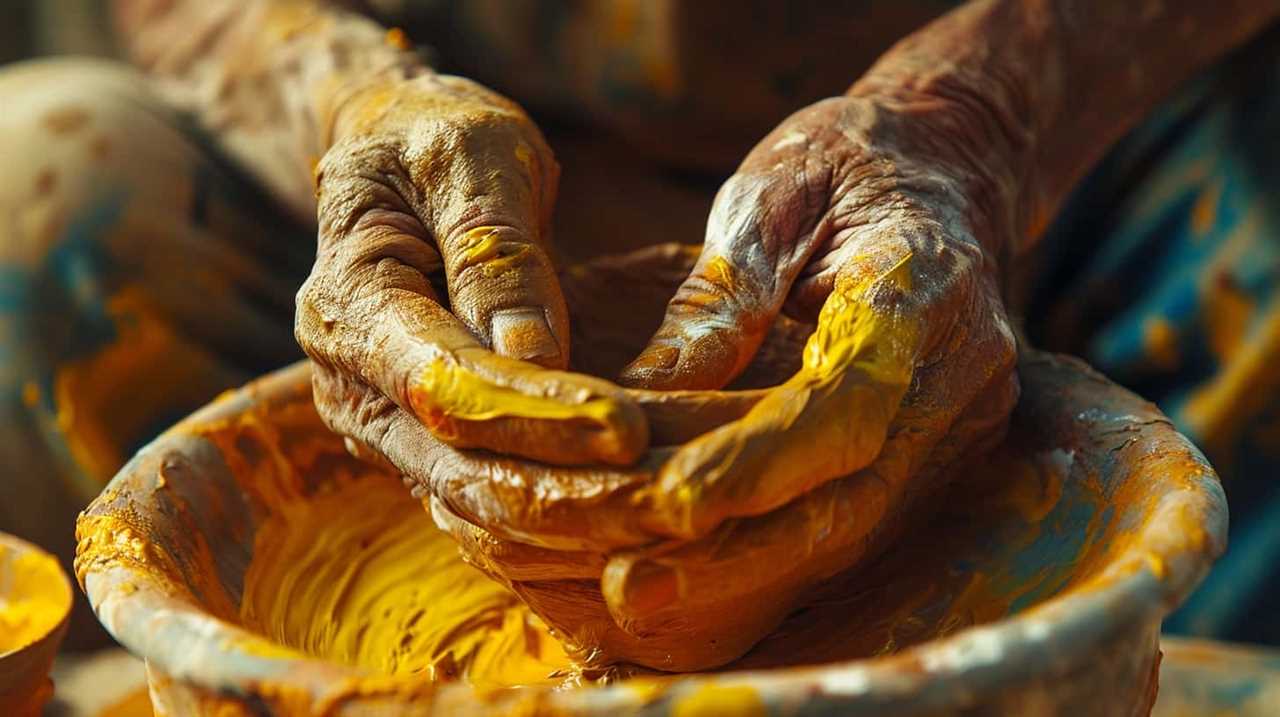
Through their wisdom, we hope to unlock the secrets of their mastery and ignite our own artistic journey. Join us as we explore the minds of these legendary artists and uncover the essence of true artistry.
Key Takeaways
- Picasso’s constant experimentation and willingness to push artistic conventions serve as a reminder of the importance of embracing change in the creative process.
- Kahlo’s art rooted in personal experiences and Mexican heritage inspires artists to explore their own personal experiences and identity in their work.
- Pollock’s innovative techniques in abstract expressionism, such as drip painting and action painting, revolutionized the artistic process and emphasized personal and emotional responses to art.
- Both Picasso and Kahlo encourage artists to think outside the box, push the boundaries of their creativity, and use art as a means to advocate for social justice and change.
Picasso’s Insight on Creative Process
One of the most important aspects of our creative process is the ability to adapt and evolve, as Picasso famously said, ‘Every act of creation is first an act of destruction.’ Picasso’s approach to experimentation and his influence on modern art are evident in his works that broke traditional boundaries and redefined artistic expression.
Picasso was known for his constant exploration and willingness to push the limits of artistic conventions. He embraced the idea that creativity requires destroying preconceived notions and established norms. His revolutionary approach to art was characterized by his bold use of color, fragmented forms, and distorted perspectives. Through his experimentation, Picasso challenged the status quo and paved the way for new artistic movements.
Picasso’s influence on modern art can’t be overstated. His innovative techniques and unconventional style inspired countless artists and shaped the trajectory of art history. He opened up new possibilities for artistic expression and encouraged artists to think outside the box. Picasso’s ability to adapt and evolve throughout his career serves as a powerful reminder of the importance of embracing change and embracing the destruction of old ideas in the creative process.
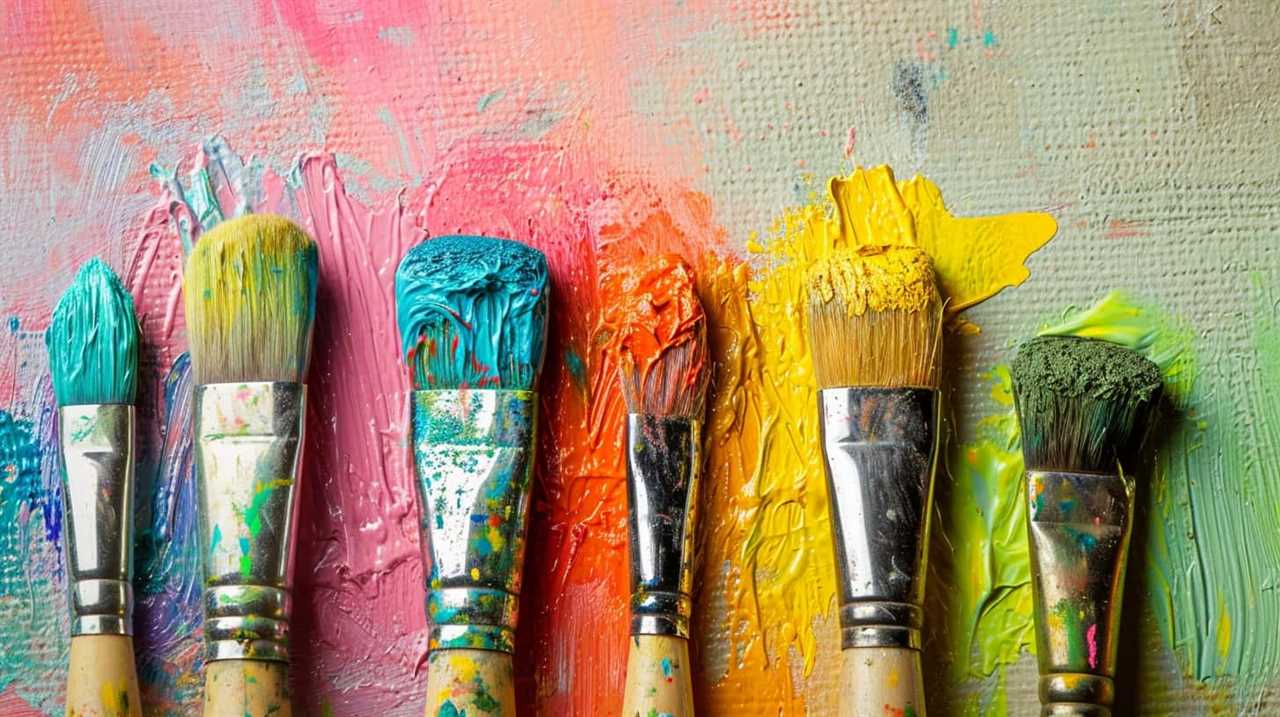
Frida Kahlo’s Reflections on Identity and Expression
Continuing our exploration of iconic creatives’ insights on artistry, let us now delve into Frida Kahlo’s profound reflections on identity and expression. Frida Kahlo, the renowned Mexican artist, was known for her powerful self-portraits that explored themes of identity, pain, and resilience. Through her artwork, Kahlo embarked on a journey of identity exploration and artistic self-discovery.
| Identity Exploration | Artistic Self Discovery |
|---|---|
| Kahlo’s art was deeply rooted in her personal experiences, particularly her Mexican heritage and physical disabilities. | She used her art as a means of expressing her emotions and reclaiming her sense of self. |
| Kahlo’s paintings often depicted her struggles with physical and emotional pain, providing a window into her inner world. | Through her art, she was able to confront and come to terms with her own identity, embracing both her strengths and vulnerabilities. |
| Kahlo’s use of vibrant colors and symbolism in her artwork showcased the complexity of her identity and the various facets of her personality. | By exploring different artistic techniques and styles, she pushed the boundaries of her own creativity and expanded her artistic repertoire. |
| Kahlo’s self-portraits served as a form of self-reflection, allowing her to examine her own identity and challenge societal norms and expectations. | Through her art, Kahlo was able to find a sense of empowerment and agency, using her voice to speak out against injustice and advocate for change. |
Frida Kahlo’s reflections on identity and expression continue to inspire artists today, reminding us of the power of art to explore and understand ourselves more deeply. Through her art, Kahlo invites us to embark on our own journey of self-discovery and embrace the unique aspects of our own identities.
Jackson Pollock’s Perspective on Abstract Expressionism
- We’re now going to explore Jackson Pollock’s perspective on Abstract Expressionism.
- Pollock’s artistic techniques:
- Drip painting: Pollock’s revolutionary method of pouring and dripping paint onto the canvas challenged traditional notions of brushwork. By eliminating the brush, he aimed to create a direct connection between his inner emotions and the canvas, allowing his subconscious to guide the artwork.
- Action painting: Pollock’s physical approach to painting involved vigorous and spontaneous gestures. He’d move around the canvas, often on the floor, using his entire body to apply paint. This dynamic process captured the energy and intensity of the artist’s movements, resulting in a sense of movement and rhythm within his works.
- All-over composition: Pollock abandoned the idea of a central focal point, opting instead for a composition that extended to the edges of the canvas. This allowed the viewer to experience the artwork as a whole, without any predetermined hierarchy of elements.
- Interpretation of abstract art:
- Pollock believed that abstract art should be experienced rather than analytically understood. He encouraged viewers to engage with his works on an emotional and visceral level, allowing their own interpretations to guide their understanding.
- The absence of recognizable subject matter in Pollock’s paintings gave rise to a sense of ambiguity and mystery. This ambiguity allowed for multiple interpretations and invited viewers to delve into their own subconscious to find meaning in the abstract forms and gestures.
- Pollock’s approach to abstraction challenged conventional notions of representation, emphasizing the importance of the artist’s process and the viewer’s subjective experience. By embracing the non-representational, he expanded the possibilities of artistic expression and opened the door to new ways of perceiving and understanding art.
In exploring Jackson Pollock’s perspective on Abstract Expressionism, we uncover the intricate techniques he employed and the profound implications of his approach to abstract art. Through his innovative methods of drip painting, action painting, and all-over composition, Pollock revolutionized the artistic process, allowing for a direct channeling of his emotions onto the canvas. His works weren’t meant to be deciphered intellectually, but rather experienced on an emotional and instinctual level. By removing recognizable subject matter, Pollock created a sense of ambiguity, inviting viewers to bring their own interpretations to the abstract forms and gestures. This rejection of traditional representation challenged established norms and opened up new possibilities for artistic expression. Pollock’s perspective on Abstract Expressionism ultimately encourages us to trust our own emotional responses and engage with art in a deeply personal way.
Frequently Asked Questions
How Did Picasso’s Creative Process Evolve Throughout His Career?
Throughout his career, Picasso’s creative process evolved, leading to groundbreaking artistic evolution. His early works showcased traditional techniques and subjects, while later periods saw him exploring new styles and pushing boundaries, ultimately cementing his status as one of the greatest artists in history.
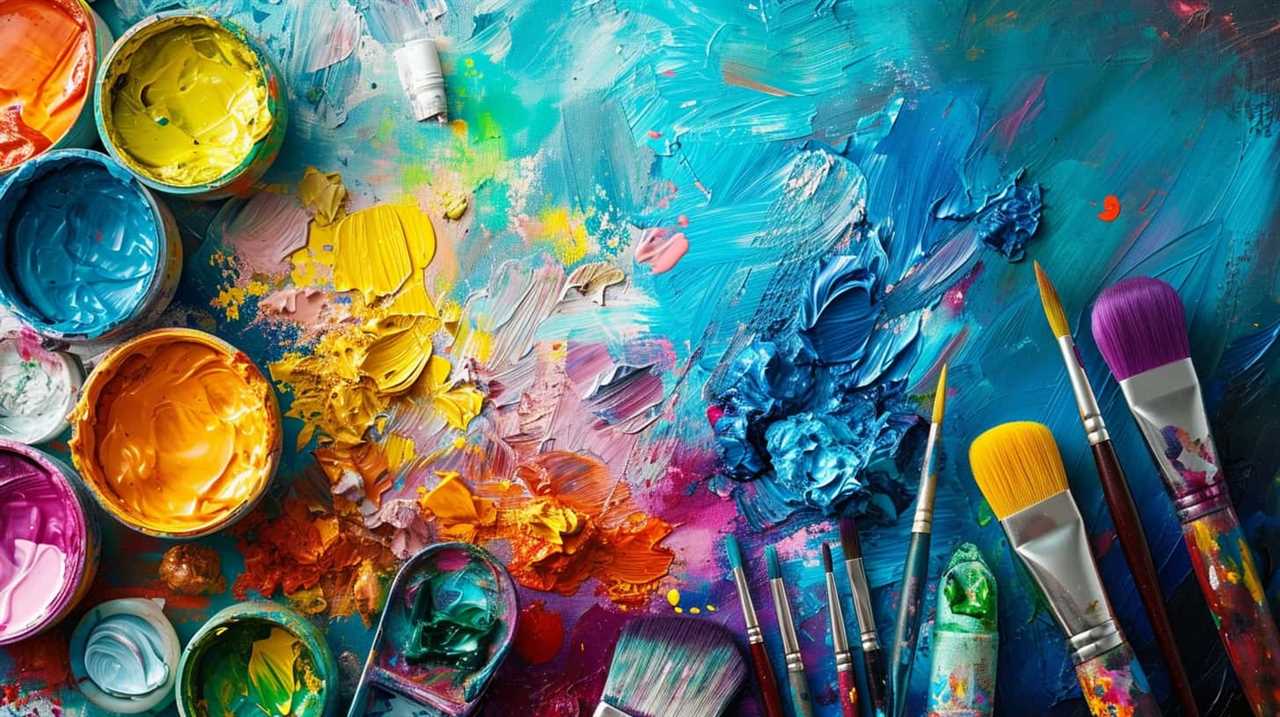
How Did Frida Kahlo’s Personal Experiences Shape Her Artistic Identity?
Frida Kahlo’s personal experiences shaped her artistic identity by influencing her unique perspective on the feminist movement and the role of personal pain in her artwork. Her impact on both continues to inspire and resonate with audiences today.
What Were the Main Influences on Jackson Pollock’s Abstract Expressionist Style?
The main influences on Jackson Pollock’s abstract expressionist style were his exploration of automatism and his interest in Native American art. These factors shaped his unique approach to painting, characterized by his signature "drip" technique.
How Did Picasso Approach the Use of Color in His Artwork?
When exploring the use of color in his artwork, Picasso approached it with a spirit of fearless experimentation. Through his bold strokes and vibrant palettes, he pushed the boundaries of traditional color theory, creating a visual language uniquely his own.
Did Frida Kahlo Consider Herself Primarily a Painter or a Political Activist?
We believe Frida Kahlo primarily considered herself a painter, but she also embraced her role as a political activist. Her artwork reflected her deep connection to feminism and her commitment to addressing social and political issues. In contrast, Picasso’s artwork incorporated political themes, but his focus was more on pushing the boundaries of artistic expression.

How Can Green-Minded Creatives’ Wisdom on Eco Artistry Align with Traditional Artistry?
Green-minded creatives’ wisdom on eco artistry can align with traditional artistry by incorporating eco art quotes from creatives who value sustainability. By merging environmentally conscious practices with traditional art techniques, artists can create thought-provoking pieces that inspire change and promote a deeper connection with nature.
Conclusion
In the world of artistry, Picasso, Kahlo, and Pollock stand as icons whose wisdom continues to inspire and provoke thought.
Through Picasso’s insight on the creative process, Kahlo’s reflections on identity and expression, and Pollock’s perspective on abstract expressionism, we’re reminded of the power of art to challenge, transform, and ignite the human spirit.
Their words serve as a reminder that art is a constant exploration of self and the world around us, inviting us to delve deeper into the realms of imagination and emotion.
Lauren’s talent in writing is matched by her passion for storytelling. Her love for books and deep understanding of culture and entertainment add a distinct flavor to her work. As our media and press contact, Lauren skillfully bridges the gap between afterQuotes and the broader media landscape, bringing our message to a wider audience.
